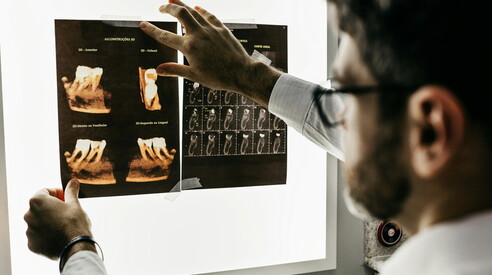This is how we move towards personalized predictive medicine


Photo by Jonathan Borba on Unsplash
Bad scientists
The "Human Phenotype Project," with over 28,000 participants, combines deep phenotyping and artificial intelligence to identify early signs of disease and develop predictive digital twins. New frontiers in prevention
On the same topic:
The Human Phenotype Project (HPP) is a large prospective study launched in 2018 with the aim of in-depth characterization of the health-disease continuum through the "deep phenotyping" of tens of thousands of individuals . To date, approximately 28,000 participants have been recruited, and over 13,000 have completed the initial visit, which includes the collection of clinical, lifestyle, and multi-omics data with the aim of identifying new molecular markers with diagnostic, prognostic, and therapeutic value, as well as developing AI-based predictive models for disease onset and progression .
HPP participants undergo a biennial assessment protocol that encompasses 17 groups of body parameters: from anthropometric measurements and imaging tests (ultrasound, bone densitometry), to continuous glucose and sleep monitoring, and a multi-omics analysis that includes genetics, transcriptomics, metabolomics, proteomics, immunoprofiling, and microbiome analysis (intestinal, vaginal, and oral). This data, anonymized and shared with the scientific community, allows the individual profile to be contextualized against standards stratified by age, gender, and body mass index.
An artificial intelligence model trained on this enormous amount of information computes a "biological age" for each individual, calculated based on deviations from expected values for each body parameter . This approach allows for the detection of early changes, for example, identifying pre-diabetes in approximately 40% of people considered healthy by traditional tests, thanks to the evaluation of glucose variations over time. The same model highlights gender differences in biological aging, with an acceleration observed in women around menopause, suggesting possible targeted hormonal interventions.
To transform this data into a predictive tool, researchers developed a generative intelligence based on an "imputation" technique : by subtracting information from the model and challenging it to reconstruct it, they obtain a framework capable of simulating future scenarios and suggesting optimal dietary changes or therapies. In particular, a multimodal "foundation AI" model, trained with self-supervised learning on food and continuous glucose monitoring data, demonstrated superior performance compared to existing methods in predicting the onset of diseases such as diabetes.
Despite the transformative potential, critical issues remain to be addressed before full clinical application . The composition of the sample, initially focused on the 40-70 age group and currently being expanded, may introduce selection bias; furthermore, most sensitive data (blood test results, anthropometric measurements) require specific access agreements, temporarily limiting the independent replicability of the results. The performance of predictive models must be validated on external cohorts that are diverse in terms of ethnicity and environmental background, and the ethical and regulatory aspects related to the management of such personal information must be assessed.
Looking ahead, the HPP intends to expand to 100,000 participants, with branches already operational in Japan and soon to be launched in the United Arab Emirates, to strengthen the global representativeness of the data. The ultimate goal is to integrate real-time results into a searchable application, allowing each individual to visualize their own "health journey" and receive personalized preventive recommendations based on the expected future evolution of their "digital twin." Although the digital twin currently represents a research prototype, its evolution could more precisely guide preventive and therapeutic strategies, provided the validation, standardization, and regulatory phases are completed.
More on these topics:
ilmanifesto





